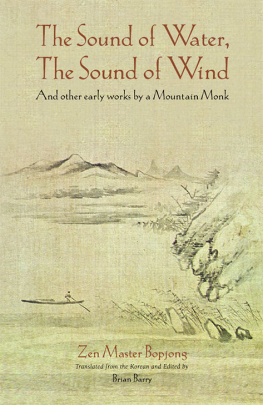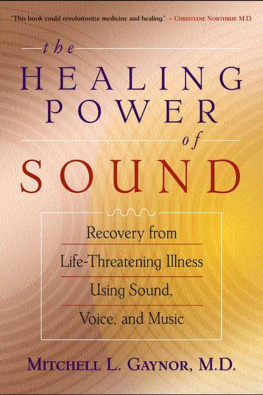my guru and the inspiration for this project.
to the science of mantras. I will be eternally grateful
for this priceless gift.
This is a story of discovery and rediscoveryin my own life and in history. In my personal story, there was the uncovering by my mother of her own lost past, the traditions of her native Indiawhich occurred in her midlife, ironically, when she moved to America. By chance her Western doctor suggested, after she complained of feeling run down, that she see a meditation teacher who could help her to start a Transcendental Meditation (TM) practice. This began, for my mother, an incredible journey deep into the ancient tradition of mantra meditation and Ayurvedic medicine in Indian culture, even as she continued to live out the American dream in Southern California.
It was my mothers discovery that led to my own profound rediscovery. Having started my own mantra practice at age nine alongside my mother, I carried our familial immersion in ancient Indian medicine forward into my professional life, transforming my neurology practice into an integrative medicine clinic and, ultimately, moving my own family back to India, where I now live and work as an Ayurvedic physician. Just as my paternal grandfather was a village doctor in Gujjarwal, India, I now also work as a physician in a small rural town outside of Vellore, India. I feel, however, more like a global village doctor: People travel from all over the world for consultations and treatments with me and other doctors at the Ayurvedic and Siddha medicine center in Tamil Nadus local hospital that was created by Amma, my spiritual teacher.
From a historic vantage, the narrative of discovery and rediscovery, though broader in scope, is similar to my own. Approximately eight thousand years ago, Siddha medicinean extremely potent form of medicine, largely shrouded in mysterywas practiced by Indian sages in South India. These spiritual masters developed many of the mantras we know today, the sounds connecting them to a reservoir of divine energy and forming the cornerstone of their practice. Around three thousand years later, Ayurvedic medicine took root in North India, sharing some of the same concepts as Siddha medicine, including an adapted mantra practice, in addressing diet, exercise, and lifestyle. In Sanskrit, ayur means life and veda means knowledge, and this medical system conveyed not only the wisdom of life but also how to enact it, with notable results, in a daily way.
Yet over the course of historybeginning in 1858, when the British Raj began its century-long rule in Indiathese ancient spiritual and medical lineages have slowly vanished. Along with their system of governance, the British brought a permeating sense of superiority, and soon many of these sophisticated and effective Indian medical traditions gave way to more modern views, particularly those of Western medicine.
More recently, however, the tenets of these ancient systems have reemerged, under the guise of new theories and research. Beginning with the advent of quantum physics in the early 1900s, and just fifty years later moving through the invention of the ultrasound in Western medicine, which showed that sound waves could capture images of internal organs, and onward to the 1990s, with the emergence of biofield sciencethe powerful impact of sound medicine on the body has begun to be recognized once again.
It is here that my story and history converge. When I moved to Tamil Nadu two years ago, it was to help establish the Ayurvedic and Siddha medicine center, yes, but also to work with Amma, who is, in the traditional sense of the term, my spiritual guru. As it was done in ancient times, when would-be physicians received the wisdom of tradition as a rigorous experiential process, she is teaching me the art and practice of Siddha medicine. Amma was born in Vellore and raised as a boy in a loving family with little means until, at the age of sixteen, while riding on a bus he felt a beam of energy shoot through him and project upward into the sky. The Goddess Narayani, the divine mother, appeared in the image projected in the sky. This was understood to be the proclamation that she was returning to earth with Amma as her avatar. An avatar, as the guru and author of the classic book Autobiography of a Yogi, Paramahansa Yogananda, once said, is born not to show us how great he was, but to give us hope that the state of consciousness he had attained, we too can attain. Though the concept of avatars is widely accepted in Indian culture, I realize it is an unfamiliar, and perhaps inconceivable, notion for Westerners. To help put it into context, Buddha was considered to be an avatar of the Hindu God Vishnu. (All avatars, however, are not founders of major religions or well-known leaderssome carry on their spiritual mission outside of the spotlight.)
Since Narayanis image appeared and Amma was claimed as a divine being, she (the pronoun now used to describe Amma given the presence of Narayani within) has created a spiritual compound containing several different temples, implemented educational programs and environmental initiatives throughout India, and is visited for spiritual guidance by the presidents of India as well as spiritual and political leaders from all over the world.
Amma also happens to be in possession of some of the most closely guarded texts of Siddha medicine. These are the palm leaf manuscripts, written in ancient dialect on dried palm leaves, cut into the shape of rectangles. Over the centuries, as the leaves decayed, duplicates have been copied onto new sets of dried palm leaves, but their wisdom dates back eight thousand years. These texts, in addition to being a treasure trove of historical and ethnographic information about the Siddhas, also include an elaborate description of their traditional medical system, including herbal formulations and the original mantras used for both healing and spiritual enlightenment.
Through Amma, I am learning about the enigmatic and impressive Siddhasdescribed in the Upanishads, a text that is part of the oldest existing Sanskrit literature in India, as possessed of superhuman powers. The Siddhas were spiritual sages, expansively perceptive and highly attuned to naturethey even created mantra practices to mimic, as well as resonate with, the sounds of the natural world. We have learned from oral history, and the palm leaf manuscripts indicate, that this system of medicine is inextricably linked to a spiritual view of the universe. Their understanding of well-being encompassed both physical health and mental balanceone cannot be achieved without the other. Their physiological understanding of the body and health is predicated on a strong connection to a massless energywhat they called Brahman. The Siddhas put themselves through rigorous trials to reach a place of both enlightenment and optimum healthfasting, taking vows of silence, creating and ingesting complex herbal formulations, engaging in lengthy mantra practices. In so doing, they achieved a spiritual existence concomitant with excellent physical health and endurance.
When Ayurvedic medicine emerged, three thousand years later, it adapted some of the same medical conceptssuch as viewing biological energies as distinct dosha typesas well as the Siddha mantra practice. Though both systems encourage a spiritual practice for its physiological benefits, Siddha medicine tends to be austere and all-encompassing, whereas Ayurvedic medicine is more accessible to everyone. Still, Ayurveda is a natural approach to health built on ancient scientific methods, such as the use of sound and vibrational medicine and diet and herbal formulas, to balance the body and mind.











